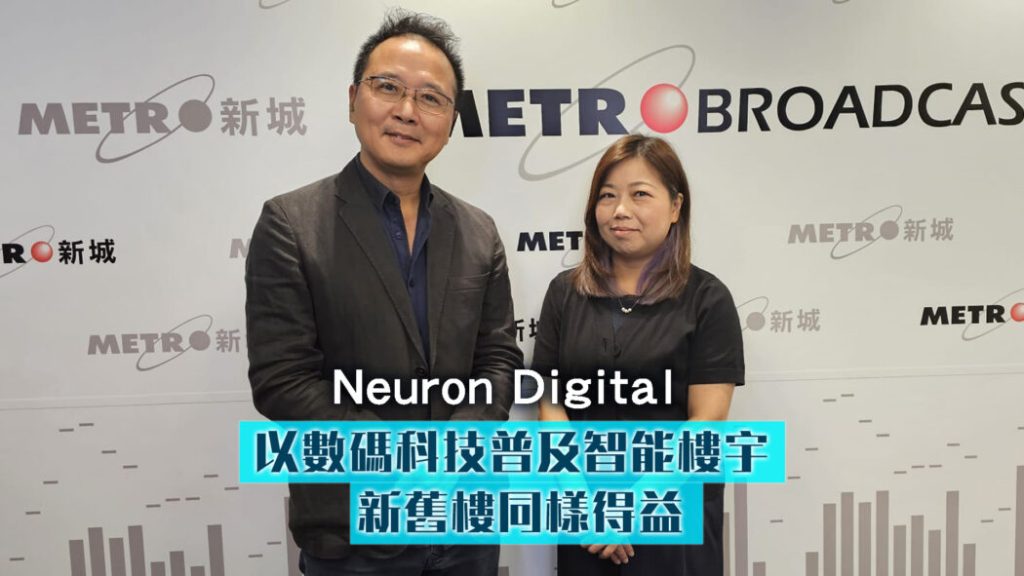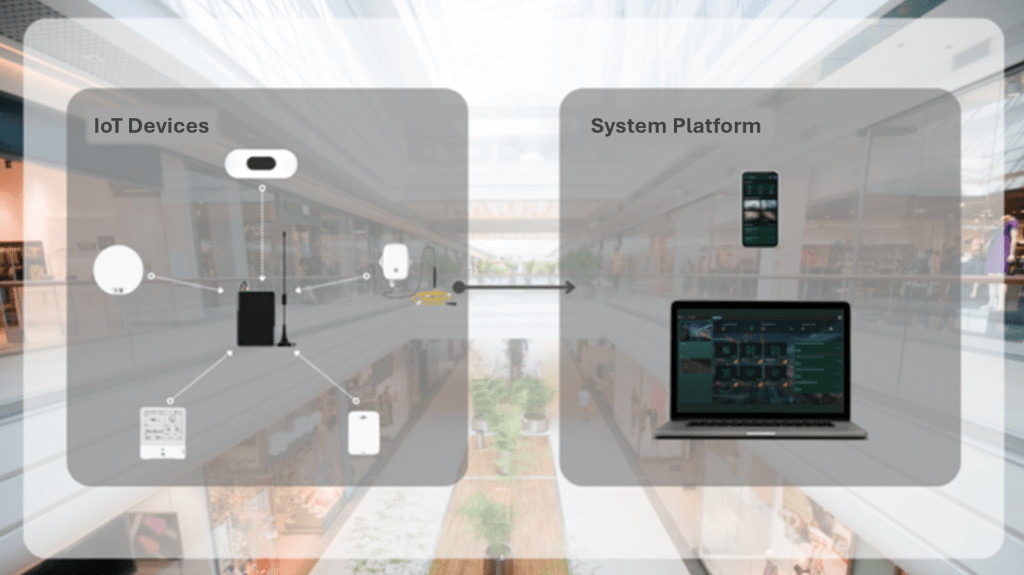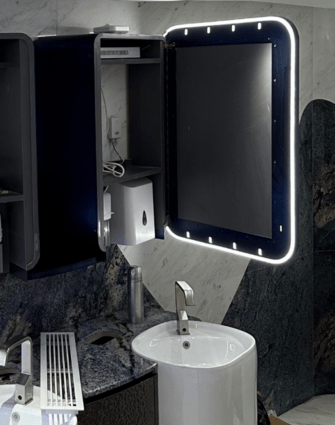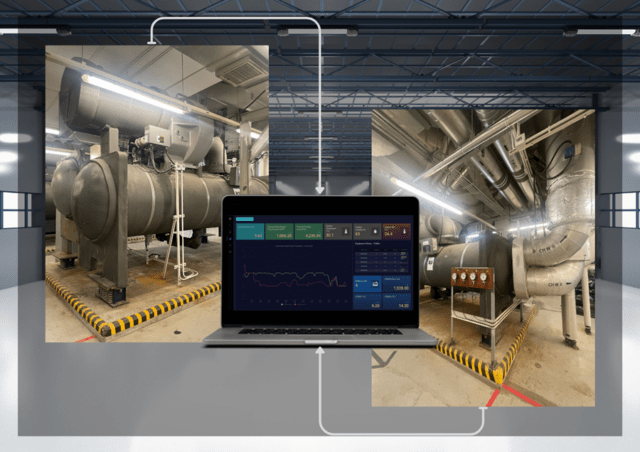
Photo courtesy of Metro Finance.
[Content Source from https://shorturl.at/EucIN dated on 11-09-2023]
Smart building software applications can improve energy efficiency, lower operational costs, optimize indoor environments, support data-driven decision-making, enhance urban image, ensure safety during emergencies, and promote social interaction. These advantages contribute to the sustainable development of cities and the quality of life for residents. Thomas Pang, the Acting CEO of Neuron Digital Group, a new-generation digital service provider for smart buildings, shared how their products enhance energy-saving applications.
Using Technology to Improve Lives in Smart Buildings
In recent years, the development of smart cities has been a focal point, and with various buildings rising in urban areas, it is essential to integrate intelligence into these structures. As a digital service provider for smart buildings, Neuron Digital focuses on developing ESG and GreenTech from the ground up.
“Our system platform is integral in maximizing the energy savings and carbon reduction of the entire building. By combining hardware (such as sensors and IoT devices) with software (our system platform), we transform buildings into smart environments. “
To create smart buildings, Neuron Digital aims to prioritize electricity savings and carbon reduction in its first phase. Thomas explains, “This is our quickest goal to achieve. Our system platform is integral in maximizing the energy savings and carbon reduction of the entire building. By combining hardware (such as sensors and IoT devices) with software (our system platform), we transform buildings into smart environments. The data collected from various sensors is sent to the core platform, processed using AI and other technologies, and then returned to the respective hardware, enabling intelligent energy-saving and carbon reduction—this is one of our key projects.”

As Hong Kong’s population and buildings age, integrating smart systems into new constructions has become standard practice for developing smart cities. However, older buildings also require transformation. Yet, retrofitting old buildings often faces challenges such as insufficient funding. Neuron Digital’s system specifically addresses this pain point: “With our background in international engineering consulting, we initially focused on large new projects, which naturally have larger budgets to implement the most advanced systems.
Neuron Digital takes pride in simplifying new technological methods into a platform as easy to use as a mobile app. For buildings that are somewhat aged and face issues of disrepair and limited funding, we fragment advanced systems and offer various convenient solutions to users in a ‘short, flat, and fast’ manner.”
Smart Bathrooms: Energy Savings and Carbon Reduction
“Many management companies, in trying to eliminate odors, simply crank up the air conditioning to maximum, resulting in a smell-free environment but freezing temperatures, which is a significant waste of electricity.”
Smart bathrooms exemplify the application of intelligent building management. Thomas shared, “First, we need to address the issues in bathrooms, such as odor, which is a major problem in shopping mall restrooms. Deploying cleaning staff daily to patrol and stay in the bathrooms wastes resources. By adding sensors, we can automatically monitor odor levels, foot traffic, humidity, and only dispatch cleaning staff when necessary, thereby saving human resources. Many management companies, in trying to eliminate odors, simply crank up the air conditioning to maximum, resulting in a smell-free environment but freezing temperatures, which is a significant waste of electricity. By using a smart system, we can effectively manage temperature, reduce odors, and allocate staff more efficiently, even preventing unfortunate incidents that occurred last year. Thus, intelligent management not only saves energy and reduces carbon emissions but also enhances service quality.”

From the user’s perspective, they most want to know which bathroom has the shortest wait time and is the cleanest. If relevant data can be collected in real time and shared with mall visitors, they can find the most suitable restroom. This not only makes it convenient for guests but also enhances the quality of service in the mall. Intelligent management improves the energy efficiency of the entire building while also elevating property management standards and image.
Generally speaking, a building’s electricity consumption is the highest. To save electricity, Thomas says that, in addition to reducing usage losses, attention must also be paid to the source of electricity: “Nowadays, households rarely use gas, so electricity becomes the largest consumption. Of course, there are many different sources of electricity, such as renewable energy. Installing solar panels or wind turbines on the rooftop can help. To save energy, it’s best to make good use of renewable resources and to use electricity sparingly.”
Future Research Path: From Hong Kong to International
Neuron Digital was established two years ago and has quickly set up operations in the Science Park, where they are now planning to relocate their domestic R&D team. Thomas notes that the concentration of talent in the Science Park is a significant advantage: “Many young people share their ideas there because creativity thrives on collaboration. When everyone is dedicated to thinking of new methods and faces problems they cannot solve alone, exchanging ideas and supporting each other can lead to faster solutions.”

Thomas has also collaborated with various organizations in the Science Park, such as the Neuron Energy Model project, where they engaged with companies providing pollution control hardware to develop and improve their products: “Others already have expertise in this field, and we can integrate that knowledge into our products to achieve more accurate analyses for energy saving and emission reduction.”
“The local goal is to make products ‘plug-and-play’, as ease of use is the most helpful aspect. Additionally, we plan to expand our products overseas, starting with Southeast Asian countries, where there is a significant need to revitalize older buildings.”
As the market in Hong Kong matures and the customer base grows, Thomas indicates that the next major plan is to continue developing more “short, flat, and quick” solutions to accelerate the rollout of products that help modernize older buildings. “The local goal is to make products ‘plug-and-play’, as ease of use is the most helpful aspect. Additionally, we plan to expand our products overseas, starting with Southeast Asian countries, where there is a significant need to revitalize older buildings.”
Contact us today to uncover the possibilities with Neuron Building Technology !